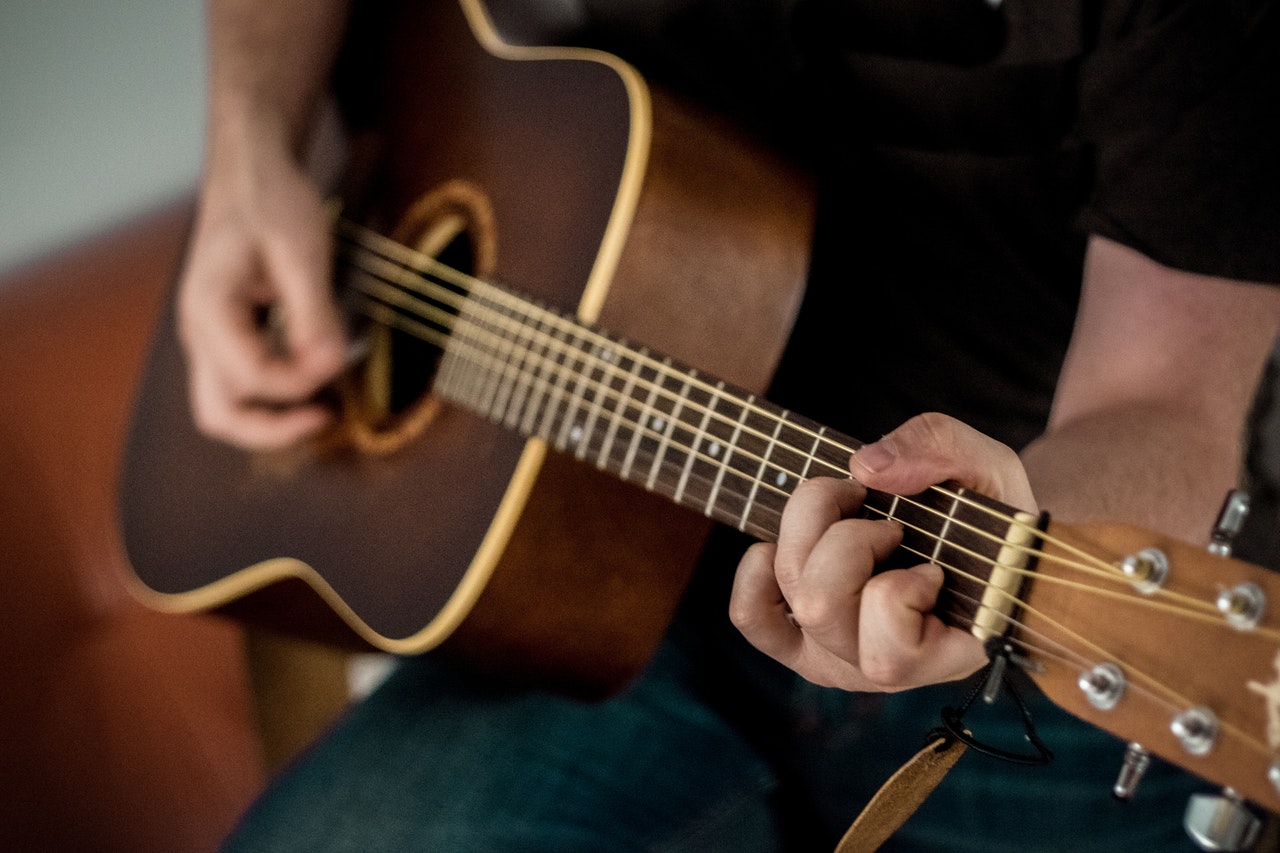Mike Mullins On A 1996 Collings D-1A
Share
(Strumming the guitar) Hello! Mike here again, with another edition of acoustic snapshots, and tonight I have a guitar that you might enjoy seeing, among many, I hope to be showing you down the line. This is a Collings guitar. Collings guitars are… uh made in Austin TX. And uh, they’re very reminiscing of the old Martin’s and their construction style, at least on the surface they’ve done a few details that have been modified and modernized but Bill Collings has been building guitars in Austin TX since about 1975,and it started off that he was been doing a lot of Martin type replicas and eventually he kind of departed in his own style. His instruments are characterized by very sharp angles and flawless workmanship, uhm just the way , things are bevelled and, and shaped or extremely of the highest order. The head stock, I assume is very very, angular and sharp. The corners are sharper than on a martin on a lot of guitars, same with the heel block, up down here, the, the heel cap rather, very pointy, it almost cut yourself on, if you’re not careful. Anyway, this model is called a D1A. And the D1, the Collings D1 is uhm basically like a Martin D18. Its uh… Mahogany back and sides, and uh this one has an Adirondack asterisk top. Adds the A, and the regular D1 has a sit guitar and its uhm somewhat less expensive because Adirondack spruce is uhm, well not really hard to come by, its just more expensive lumber to use for a top on a guitar, and its also considered a bit superiors as far as town over Sitka, generally. That is a general statement, not uh, always, you know, stone cold fact. But anyway, It’s got an ebony finger board and bridge. And, its got the scalloped, Martin style, pretty were bracing, in the top. And basically the bracing on the back is pretty much like what you see in the Martin from the 1930’s, the neck; I think is like a 1 and 11/16, which is about the width of the Martin guitars went to around 1940 or so. And uh before that there were 1 and 3/4 in core bands and variations. That generally, what’s been. So this guitar is/are just wonderful instruments. and uhm, this one like I said, I don’t know if I mentioned is made 1996, serial number 2371, its one of personal guitars.
There are a couple of unique features about this. I’m not the original owner. The original owner, rather than ornamenting the guitar in pretty a lot of pearl in lay, or putting some sort of a special, you know ornamentation on it, he wanted an instrument who’s very clean, very all steer. So he actually took probably one of the plainest models. And actually wanted it built so that it will even have less in lay, ’cause normally we have dots in the fret border. This fret border is completely, divided and it has side dots, position markers, but nothing in the finger border itself, just a flat black piece of ebony. And also the heads top normally have Collings and pearls ripped up here at the top and it’s very tasteful, but its also very visible, you can see it from a long way up so you know that its a Collings guitar. But this one, he wanted that heads top to be left plain and the only concession to like something that might be custom or a little fancier was ,uhm… we had a uhm Brazilian rosehip overlay, put on the heads top. which of a lot of Collings guitars have. But this one is really special. Its slob cut. It has a nice burl green to. It’s just a wonderful piece of wood. Now I’m trying to hold it up so you can see that. That wood on there is really stunning. And its the only feature this guitar can be considered, kind of a lil bit fancy. The rest of it is about as plain a a piece of shake of furniture, very functional, very beautiful and a great strumming instrument. and uhm, yeah I love this guitar. I travel with it, you know. Its a they might want to take the mark on the road. I take this guy, and Collings kinda have a more characteristic sound. Kinda Martin like. But a little hard to describe what the difference is. They have a, I don’t know, there’s a very special clarity to their tone, and in their edging is single tone. Not too much bass, you know. Very balanced, and there’s definitely an edge to the attack, and you hear those higher overtones. And there’s a lot of separation between notes. None of ’em make its money, it’s just a real (strumming the guitar) Clear tone. So, we’ll play a little something for you, and uh let’s see how it sounds, and alright, and uhm thanks for joining me this episode of acoustic snapshots, and we’ll see you next time.
(Strumming the guitar)









